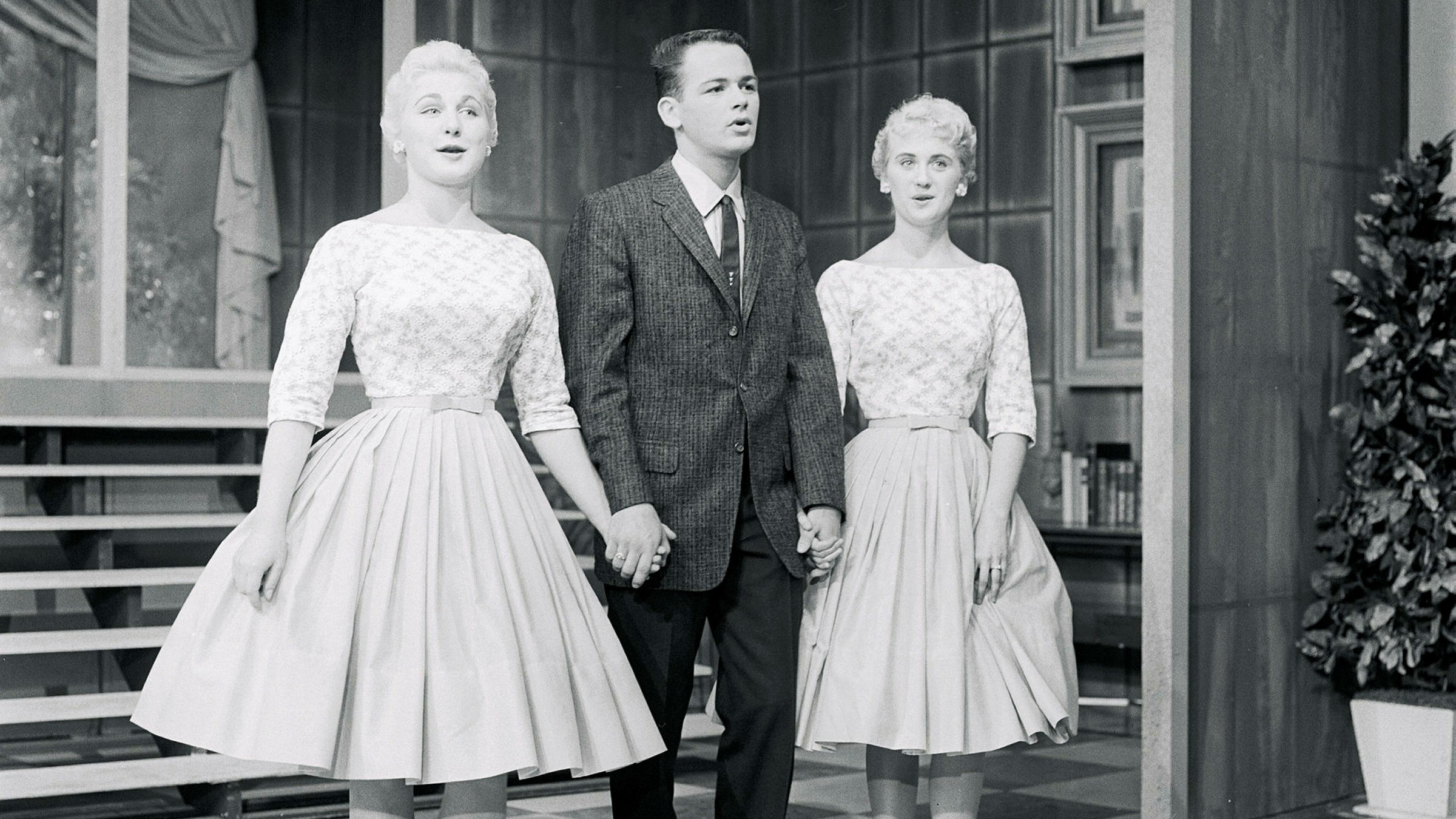At the start of this year, the death of the director Joan Micklin Silver saw a flurry of interest in her 1988 romcom Crossing Delancey, based on the play by Susan Sandler. The obituaries failed to mention something that made the film such a delight, though: the soundtrack by the sororal trio The Roches, one element of which was a wonderful, beautiful wisp of a song, formed around a wordless dooby-doo hook so weightless it seemed to have materialised in the ether before evaporating again, leaving no trace.
“Come Softly to Me” was not The Roches’ own song, but it was apt that it should appear, sung by women, in a film directed and written by women. It was written and first recorded by The Fleetwoods, who were an unusual group among the scores of close-harmony ensembles in late-’50s America, in that they were mixed sex, and they weren’t reliant on outside writers. Gretchen Christopher, Barbara Ellis and Gary Troxel wrote and sang “Come Softly to Me” themselves, first performing it at a senior class dance at their high school in Olympia, Washington.
Another woman was instrumental in its production and release. Bonnie Guitar, a country star in her own right, spent six months working on perfecting the recording — an eternity by the standards of the day — playing all the guitar parts herself, and positioning and repositioning the microphones to capture the trio’s voices in complete intimacy. And then, as co-owner of Dolphin Records, she put it out in the world as the label’s first release. “Come Softly to Me” was an early triumph of pop music made by women.
The song seemed to capture the moment when teenage innocence and adult desire begin to co-exist (Dolphin’s other owner, Bob Reisdorf, felt it tipped a little too far towards the latter, and insisted the words “To Me” be added to the title, lest it be taken to be wholly lacking in innocence). It evidently struck a chord: it reached number one in the Billboard Hot 100 in April 1959 and stayed there for four weeks.
As was the way with hits in those days, the slew of cover versions was instant, though more unusual was that the versions crossed language lines, because the melody was so indelible. Frank Gérald and Pierre Delanoë added French lyrics, retitled it “Tout doux, tout doucement” (“All soft, all slowly”), and it became a minor standard in France, recorded by Marcel Amont, then Henri Salvador, and many others.
One might think that a song so redolent of its era — all letter jackets and bobby sox — would fade as innocence became a less prized virtue. But there was something in the purity of “Come Softly to Me” that led to it being revived in the second half of the 1960s, as young men died in Vietnam, as free love replaced chaste affection, and marijuana supplanted malted milks.
The Fleetwoods themselves re-recorded it in 1965, in a glorious baroque arrangement by Jack Nitzsche. Country singer Sandy Posey took it into girl-group territory, with an insistent drum beat, in a version that seemed like a natural evolution. Percy Sledge reined in his passion to deliver a beautiful deep soul recording for Atlantic in 1968, which dispensed with the dooby-doos, but proved there was a real song in there, not just a fluttering heartbeat. Astrud Gilberto’s affectless delivery didn’t quite work, and she mashed into a medley with “Hushabye”, which overwhelmed it. The New Seekers had a UK top 20 hit with it in 1972, a year after teaching the world to sing, but theirs was saccharine rather than innocent. Ken Boothe’s lilting reggae recording, from the days when Trojan would routinely send its artists into the studio to record American hits, was as smooth and supple as you might expect.
More interesting still were the versions recorded by artists for whom the song was redolent of childhood. Bob Welch, formerly of Fleetwood Mac, had a stab in 1979 with his old bandmate Christine McVie singing back-up. The contrast between the cocaine psychosis McVie’s band were going through at the time — holed up in the studio recording the far-from-innocent Tusk — is startling. Three years later Buck Dharma of Blue Öyster Cult — a band who prided themselves on there being none more sinister — played it absolutely straight on his solo album Flat Out, which must have baffled fans expecting something more akin to Dominance and Submission.
It still refuses to die. Late last year, the achingly hip label Italians Do It Better introduced a new artist named Glüme, her publicity shots depicting a red-lipped siren with weeping mascara. Her debut single, billed as “eerie” and “Twin Peaks-styled”? “Come Softly to Me”. It’s an incorruptible song, a wonder.
What are your memories of ‘Come Softly to Me’? Let us know in the comments below.
‘The Life of a Song Volume 2: The stories behind 50 more of the world’s best-loved songs’, edited by David Cheal and Jan Dalley, is published by Brewer’s
Music credits: Rhino/Warner Records; EMI Catalog (USA); The Restoration Project; Mon patrimoine musical; Milestones Records; Big Buzz Productions; Atlantic Records; Verve Reissues; Caroline International; Trojan Records; Capitol Records; Italians Do It Better
Picture credit: Walt Disney Television via Getty
